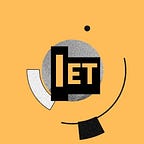Craft and the Process of UX Design: Techniques for Problem Solving
Craft and the Process of UX Design: Techniques for Problem Solving
Ketan Raval
Chief Technology Officer (CTO) Teleview Electronics — India | Expert in Software & Systems Design | Business Intelligence | Reverse Engineering | Ex. S.P.P.W.D Trainer
March 12, 2024
Craft and the Process of UX Design: Techniques for Problem Solving
Learn about the importance of problem solving in UX design and discover techniques such as conducting surveys, user interviews, and affinity mapping. Gain valuable insights, understand user needs, and create intuitive designs with a systematic approach to problem-solving in UX design.
Introduction
UX design is an intricate process that involves understanding user needs, solving problems, and creating delightful experiences.
Craft, in the context of UX design, refers to the meticulous attention to detail and the thoughtful approach towards solving design challenges.
In this article, we will explore various techniques that can be used to solve UX problems, including conducting surveys, user interviews, and affinity mapping.
The Importance of Problem Solving in UX Design
Problem solving is at the core of UX design. It involves identifying user pain points, understanding their needs, and finding innovative solutions to address those challenges. By approaching design problems with a problem-solving mindset, UX designers can create intuitive and user-centered experiences.
The Art and Science of UX Design: A step-by-step guide to designing amazing user experiences
Conducting Surveys
Surveys are an effective way to gather quantitative data and insights from a large number of users. By creating well-structured surveys, UX designers can collect valuable information about user preferences, behaviors, and pain points. Here’s an example of how a survey can be conducted:
// Example survey code const surveyQuestions = [ "What features would you like to see in our product?", "How satisfied are you with the current user interface?", "What challenges do you face while using our product?" ]; function conductSurvey(questions) { // Code to display survey questions and collect user responses // Code to analyze survey data and extract insights }
User Interviews
User interviews provide qualitative insights by allowing designers to directly interact with users an
User Interviews
User interviews provide qualitative insights by allowing designers to directly interact with users and understand their perspectives. Through open-ended questions and active listening, UX designers can gain deep insights into user motivations, pain points, and expectations. Here’s an example of how a user interview can be conducted:
// Example user interview code function conductUserInterview() { // Code to set up user interview sessions // Code to ask open-ended questions and record user responses // Code to analyze interview data and identify patterns }
Affinity Mapping
Affinity mapping is a technique that helps UX designers organize and make sense of qualitative data collected from user research. It involves grouping related insights and observations into themes or categories. By visually mapping these themes, designers can identify patterns and prioritize design decisions. Here’s an example of how affinity mapping can be done:
// Example affinity mapping code const insights = [ "Users find the navigation confusing", "Users prefer a clean and minimalist design", "Users struggle with the checkout process" ]; function conductAffinityMapping(data) { // Code to group related insights into themes or categories // Code to create an affinity map visualization }
Conclusion
Crafting exceptional user experiences requires a systematic approach to problem-solving. By utilizing techniques such as conducting surveys, user interviews, and affinity mapping, UX designers can gain valuable insights, understand user needs, and create intuitive designs.
The process of UX design is an ongoing journey of discovery, iteration, and refinement, where the craft lies in finding innovative solutions to complex problems.
Remember, the key to successful problem-solving in UX design is to empathize with users, gather data, analyze insights, and iterate on design solutions.
By embracing the craft of UX design and employing these problem-solving techniques, designers can create impactful experiences that delight users and drive business success.
The Art and Science of UX Design: A step-by-step guide to designing amazing user experiences
================================================
for more IT Knowledge, visit https://itexamtools.com/
check Our IT blog — https://itexamsusa.blogspot.com/
check Our Medium IT articles — https://itcertifications.medium.com/
Join Our Facebook IT group — https://www.facebook.com/groups/itexamtools
check IT stuff on Pinterest — https://in.pinterest.com/itexamtools/
find Our IT stuff on twitter — https://twitter.com/texam_i
